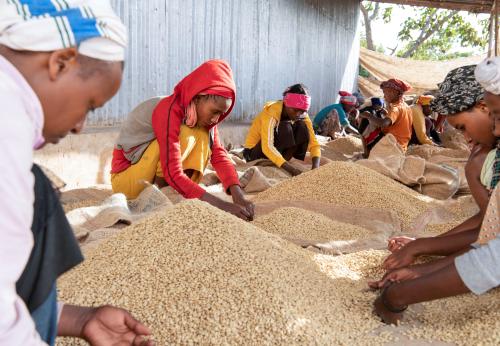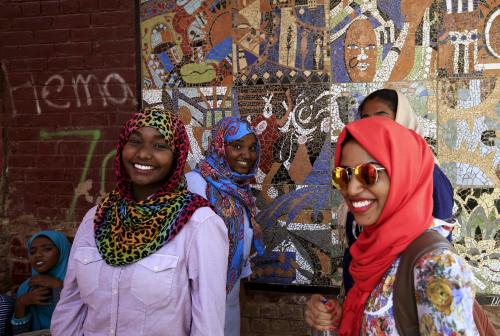Last month, the McKinsey Global Institute released a new report tracking progress on gender equality in Africa. The report, “The power of parity: Advancing women’s equality in Africa,” includes a gender parity score for each country composed of 15 indicators across two dimensions, gender inequality at work and gender inequality in society. According to the report, overall progress on gender equality has stalled in Africa as the region’s gender parity score of 0.58 is the same as it was in 2015. Within the continent, South Africa has the highest gender parity score while Niger performs the worst. The report finds that Africa could add $316 billion to its GDP by 2025 if every country improved its score to match the best performing African country on each indicator.
The report finds that Africa performs well overall on gender inequality at work with a higher-than-average labor force participation rate compared to the rest of the world. Most notably, the report finds that African women are in leadership roles: African firms had the highest share of female representation on company boards—25 percent compared to the global average of 17 percent (Figure 1).
Figure 1: Africa has achieved representation of women in top leadership roles above the world average, mainly driven by sub-Saharan Africa
 Source: McKinsey Global Institute. 2019. The power of parity: Advancing women’s equality in Africa
Source: McKinsey Global Institute. 2019. The power of parity: Advancing women’s equality in Africa
While progress has been made at the top level of firms, women are less well represented in middle management and formal sector jobs more broadly. Notably, women make up 43 percent of those who receive a tertiary education but hold only 28 percent of formal sector jobs (Figure 2). Additionally, the share of women in middle management has declined by 1 percent annually since 2015. The report notes that middle management jobs are a pipeline to leadership level positions and more needs to be done in this area if Africa is going to maintain its lead in female representation at the top level of firms.
Figure 2: The share of women in business roles falls from entry-level to top leadership positions
 Source: McKinsey Global Institute. 2019. The power of parity: Advancing women’s equality in Africa
Source: McKinsey Global Institute. 2019. The power of parity: Advancing women’s equality in Africa
The report highlights five priority areas for interventions, including investing in human capital and creating economic opportunity. More specifically, the report proposes investments in girls’ education, skills training for jobs of the future, accessible and affordable health care, and further efforts to improve financial, digital, and legal literacy. To improve economic opportunities for women, the report suggests that African businesses set clear goals for gender diversity and implement mentorship programs, among other recommendations.







Commentary
Figure of the week: Gender equality in employment in Africa
December 5, 2019